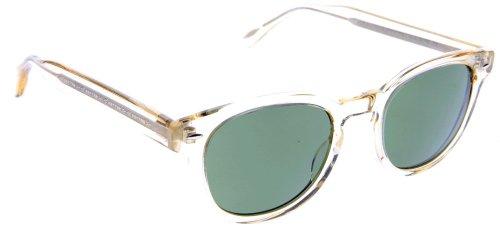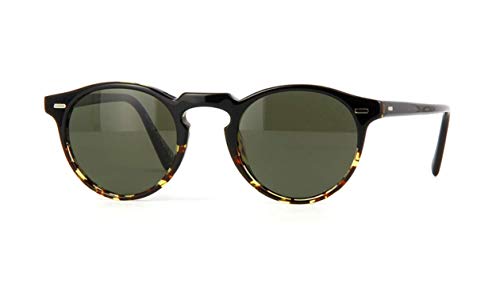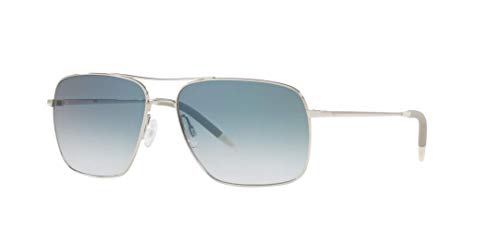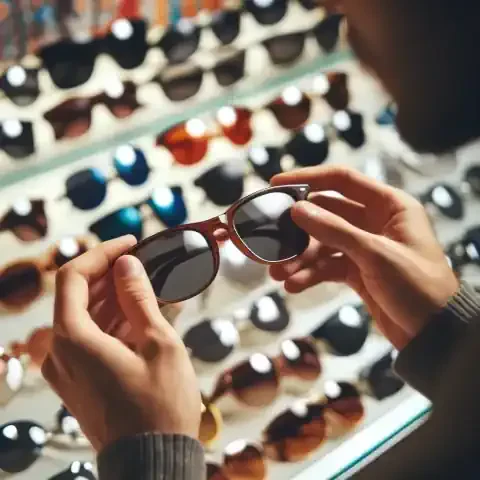Introduction
In today's world, the significance of eco-friendly practices in consumer goods cannot be overstated. With growing environmental concerns and increasing awareness of sustainability issues, consumers are increasingly mindful of the impact their purchasing decisions have on the planet. This shift in consciousness has led to a burgeoning interest in sustainable fashion and accessories, as individuals seek ways to align their personal style with their environmental values.
One particular area of focus within the realm of sustainable fashion is eco-friendly eyewear options. Eyewear, once solely viewed as a necessity for vision correction or sun protection, is now recognized as a fashion statement and accessory that can reflect one's personality and values. As such, there has been a notable shift towards seeking out eyewear that not only looks good but also minimizes its environmental footprint.
In this article, we delve into the importance of eco-friendly practices in consumer goods, explore the burgeoning interest in sustainable fashion and accessories, and specifically focus on the significance of eco-friendly eyewear options as a sustainable choice. By examining the environmental impact of conventional eyewear, highlighting characteristics of eco-friendly eyewear, showcasing brands and options available in the market, and discussing the benefits, challenges, and future outlook, we aim to provide readers with a comprehensive understanding of why eco-friendly eyewear matters and how it can contribute to a more sustainable future.
The Environmental Impact of Conventional Eyewear
Conventional eyewear, while serving a crucial function in vision correction and eye protection, often carries a significant environmental burden throughout its lifecycle. This section explores the various aspects of the environmental impact associated with conventional eyewear, including the materials used in production, manufacturing processes, and the disposal of non-biodegradable materials.
Materials used in traditional eyewear production
Traditional eyewear is typically crafted from a variety of materials, including plastics, metals, and glass. Acetate, a type of plastic derived from cellulose, is commonly used in the production of frames due to its versatility and moldability. Additionally, metals such as stainless steel and titanium are favored for their strength and durability, particularly in high-end eyewear. While these materials offer functional benefits, their production often entails the extraction of natural resources and energy-intensive processes, contributing to environmental degradation.
Manufacturing processes and their ecological footprint
The manufacturing of conventional eyewear involves numerous processes, each of which carries its own ecological footprint. From material extraction to fabrication and assembly, energy-intensive manufacturing techniques, such as injection molding and metal casting, consume substantial resources and emit greenhouse gases. Furthermore, the use of chemical dyes, coatings, and adhesives in the production process can result in pollution of air and waterways, further exacerbating environmental concerns.
Disposal and end-of-life impact of non-biodegradable materials
Perhaps one of the most significant environmental challenges associated with conventional eyewear is the disposal of non-biodegradable materials. At the end of their lifespan, eyewear products often end up in landfills, where they may take hundreds of years to decompose fully. Moreover, plastic frames and lenses can break down into microplastics, posing a threat to marine life and ecosystems when they enter waterways through improper disposal or littering. This accumulation of non-biodegradable waste contributes to pollution and resource depletion, perpetuating the cycle of environmental harm.
In summary, the environmental impact of conventional eyewear extends throughout its lifecycle, from the extraction of raw materials to manufacturing processes and end-of-life disposal. As awareness of these issues grows, there is a growing imperative to seek out more sustainable alternatives that minimize environmental harm and promote a circular economy.
Characteristics of Eco-Friendly Eyewear
Eco-friendly eyewear embodies a commitment to sustainability throughout its production process, from the selection of materials to manufacturing techniques and end-of-life considerations. This section explores the key characteristics that distinguish eco-friendly eyewear, including the use of sustainable materials, eco-conscious manufacturing processes, and the durability and longevity of these products.
Sustainable materials used in production
Eco-friendly eyewear prioritizes the use of sustainable materials that minimize environmental impact and promote resource conservation. Some common materials used in the production of eco-friendly eyewear include:
Recycled plastics: By repurposing post-consumer or post-industrial plastics, eco-friendly eyewear reduces reliance on virgin plastic production and diverts waste from landfills. Recycled plastics can be used to create durable frames and lenses, offering a sustainable alternative to conventional eyewear materials.
Bamboo: Bamboo is a rapidly renewable resource that boasts strength, flexibility, and natural aesthetics. As a highly sustainable material, bamboo requires minimal water and pesticides to grow and can be harvested without causing deforestation. Bamboo frames offer a lightweight and eco-friendly option for eyewear enthusiasts.
Wood: Sustainably sourced wood, such as reclaimed or FSC-certified timber, is utilized in eco-friendly eyewear for its unique grain patterns and biodegradable properties. Wood frames are lightweight, hypoallergenic, and biodegradable, making them an environmentally conscious choice for discerning consumers.
Biodegradable acetate: Unlike traditional acetate derived from petroleum-based sources, biodegradable acetate is made from renewable plant-based materials, such as cellulose acetate derived from cotton or wood pulp. Biodegradable acetate frames are compostable and break down naturally at the end of their lifespan, minimizing environmental impact.
Eco-conscious manufacturing processes
In addition to sustainable materials, eco-friendly eyewear is produced using manufacturing processes that prioritize environmental sustainability and social responsibility. Key aspects of eco-conscious manufacturing include:
Reduced water usage: Eco-friendly eyewear manufacturers implement water-saving technologies and practices to minimize water consumption during production processes, such as frame molding and finishing.
Minimal carbon emissions: By optimizing energy efficiency and utilizing renewable energy sources, eco-friendly eyewear production aims to reduce carbon emissions and mitigate its carbon footprint. This may involve investing in solar power, implementing energy-efficient equipment, and adopting eco-friendly transportation practices.
Ethical labor practices: Eco-friendly eyewear brands prioritize fair labor practices and uphold ethical standards throughout their supply chains. This includes ensuring safe working conditions, fair wages, and equitable treatment of workers involved in the production process, from raw material extraction to manufacturing and distribution.
Durability and longevity of eco-friendly eyewear
One of the hallmarks of eco-friendly eyewear is its durability and longevity, which contribute to reduced resource consumption and waste generation over time. By investing in high-quality materials and craftsmanship, eco-friendly eyewear brands produce products that withstand daily wear and tear, minimizing the need for frequent replacements. This emphasis on durability not only extends the lifespan of eyewear but also enhances its sustainability credentials, making it a conscientious choice for environmentally conscious consumers.
Brands and Options in Eco-Friendly Eyewear
Eco-friendly eyewear has gained significant traction in recent years, with a growing number of brands prioritizing sustainability in their design and manufacturing processes. This section provides an overview of leading brands that are at the forefront of the eco-friendly eyewear movement, highlights the diverse range of styles and designs available, and discusses the accessibility and price points of eco-friendly options.
Overview of leading brands prioritizing sustainability
Sea2See: Sea2See is a pioneering brand that transforms marine plastic waste into high-quality eyewear frames. By collecting and upcycling ocean-bound plastic, Sea2See not only helps clean up marine ecosystems but also produces stylish and sustainable eyewear that resonates with eco-conscious consumers.
Proof Eyewear: Proof Eyewear is known for its commitment to sustainability and social responsibility. The brand utilizes sustainable materials such as FSC-certified wood, recycled aluminum, and cotton-based acetate to create eco-friendly eyewear that blends style with environmental consciousness.
Pala Eyewear: Pala Eyewear is dedicated to promoting environmental and social sustainability through its range of ethically crafted eyewear. With a focus on using bio-based and recycled materials, Pala Eyewear offers a diverse selection of stylish frames that support reforestation initiatives and fair trade practices in communities where their products are sourced.
Dick Moby: Dick Moby is a Dutch eyewear brand renowned for its eco-friendly approach to eyewear production. From recycled acetate frames to bio-based lenses, Dick Moby prioritizes sustainability at every stage of the manufacturing process, offering trendy and durable eyewear options for environmentally conscious consumers.
Range of styles and designs available in eco-friendly eyewear
Eco-friendly eyewear is available in a wide range of styles and designs to suit diverse tastes and preferences. Whether you're looking for classic aviators, retro-inspired frames, or modern minimalist designs, eco-friendly brands offer a plethora of options to cater to various style sensibilities. From bold colors and patterns to sleek silhouettes and textured finishes, eco-friendly eyewear combines fashion-forward aesthetics with sustainable materials, allowing consumers to make eco-conscious choices without compromising on style.
Price points and accessibility of eco-friendly options
While eco-friendly eyewear may have been perceived as niche or premium in the past, the increasing demand for sustainable fashion has led to greater accessibility and affordability of eco-friendly options. Many eco-friendly eyewear brands offer a range of price points to accommodate different budgets, making sustainable eyewear more accessible to a broader audience. Additionally, some brands offer incentives such as recycling programs or discounts for returning old frames, further enhancing the accessibility and affordability of eco-friendly eyewear options. As consumer awareness continues to grow and demand for sustainable products rises, the availability and affordability of eco-friendly eyewear are expected to increase, making sustainable fashion choices more attainable for all.
Benefits of Choosing Eco-Friendly Eyewear
Opting for eco-friendly eyewear goes beyond just making a fashion statement—it offers a host of benefits for both individuals and the planet. This section explores the various advantages of choosing eco-friendly eyewear, including its reduced environmental impact, support for ethical and sustainable practices in fashion, the health benefits of natural materials, and its contribution to the circular economy and waste reduction efforts.
Reduced environmental impact
One of the most significant benefits of choosing eco-friendly eyewear is its reduced environmental impact compared to conventional options. By utilizing sustainable materials and eco-conscious manufacturing processes, eco-friendly eyewear minimizes resource consumption, energy usage, and greenhouse gas emissions throughout its lifecycle. Moreover, by incorporating recycled and biodegradable materials, eco-friendly eyewear helps divert waste from landfills and reduces pollution, contributing to a healthier planet for future generations.
Support for ethical and sustainable practices in fashion
Eco-friendly eyewear represents a commitment to ethical and sustainable practices within the fashion industry. By supporting brands that prioritize environmental stewardship, fair labor practices, and social responsibility, consumers can drive positive change and advocate for a more sustainable fashion ecosystem. By voting with their wallets, individuals can encourage the adoption of sustainable practices across the supply chain and promote transparency and accountability within the industry.
Health benefits of natural materials for eyewear
Eco-friendly eyewear often utilizes natural materials such as wood, bamboo, and bio-based acetate, which offer inherent health benefits compared to synthetic alternatives. Natural materials are hypoallergenic, lightweight, and biocompatible, making them ideal for individuals with sensitive skin or allergies. Additionally, natural materials are free from harmful chemicals and toxins commonly found in traditional eyewear, reducing the risk of adverse reactions and promoting overall ocular health and comfort.
Contribution to circular economy and waste reduction
Choosing eco-friendly eyewear contributes to the development of a circular economy by extending the lifespan of products and minimizing waste generation. By prioritizing durability, repairability, and recyclability, eco-friendly eyewear brands encourage consumers to adopt a more sustainable approach to consumption and disposal. Moreover, some brands offer take-back programs or recycling initiatives, allowing customers to return old eyewear for repurposing or recycling, further closing the loop and reducing the environmental footprint of eyewear production.
In summary, the benefits of choosing eco-friendly eyewear extend far beyond personal style and fashion preferences. By opting for sustainable materials, supporting ethical practices, and prioritizing health and environmental stewardship, consumers can make a positive impact on both individual well-being and the health of the planet.
Challenges and Considerations
While the adoption of eco-friendly eyewear offers numerous benefits, there are also challenges and considerations that consumers may encounter when making sustainable choices in eyewear. This section addresses some of the key challenges and considerations, including limited availability and variety, cost considerations, and the importance of consumer education and awareness regarding sustainable choices.
Limited availability and variety compared to conventional eyewear
One of the primary challenges of eco-friendly eyewear is its limited availability and variety compared to conventional options. While sustainable eyewear brands have been gaining traction in recent years, they may not yet have the same widespread presence as mainstream eyewear brands. As a result, consumers may find it challenging to access eco-friendly eyewear options in their local stores or optometrists' offices, limiting their choices when seeking sustainable alternatives.
Cost considerations for eco-friendly options
Another consideration when choosing eco-friendly eyewear is the associated cost. Sustainable materials and eco-conscious manufacturing processes may incur higher production costs compared to conventional methods, leading to premium price points for eco-friendly eyewear products. While the initial investment in eco-friendly eyewear may be higher, it's essential to consider the long-term value and sustainability benefits that these products offer, such as durability, longevity, and reduced environmental impact over time.
Consumer education and awareness regarding sustainable choices
A crucial aspect of promoting eco-friendly eyewear adoption is consumer education and awareness regarding sustainable choices. Many consumers may not be fully informed about the environmental impact of conventional eyewear or the availability of eco-friendly alternatives. Therefore, there is a need for comprehensive education initiatives to raise awareness about the benefits of choosing eco-friendly eyewear, the importance of sustainable materials and manufacturing processes, and how consumers can make informed purchasing decisions that align with their values and environmental goals.
Addressing these challenges and considerations requires collaboration among eyewear brands, retailers, policymakers, and consumers to promote greater accessibility, affordability, and awareness of eco-friendly eyewear options. By working together to overcome these hurdles, we can accelerate the transition towards a more sustainable and responsible eyewear industry that benefits both people and the planet.
Tips for Choosing and Caring for Eco-Friendly Eyewear
Choosing eco-friendly eyewear is just the first step towards reducing your environmental impact. Proper care and maintenance are essential to prolong the lifespan of your eco-friendly eyewear and minimize waste. Additionally, understanding how to assess material sustainability and practicing responsible recycling and disposal are crucial aspects of sustainable eyewear ownership. This section provides valuable tips for selecting, caring for, and responsibly disposing of eco-friendly eyewear.
Assessing material sustainability and certifications
When selecting eco-friendly eyewear, look for brands that prioritize sustainability and transparency in their material sourcing and manufacturing processes. Consider the following factors:
Material sourcing: Choose eyewear made from sustainable materials such as recycled plastics, bamboo, wood, or biodegradable acetate. Look for certifications such as Forest Stewardship Council (FSC) certification for wood or Global Recycled Standard (GRS) certification for recycled materials.
Manufacturing processes: Research brands that employ eco-conscious manufacturing practices, such as minimizing water usage, reducing carbon emissions, and prioritizing ethical labor practices. Look for certifications like Bluesign or ISO 14001 for environmentally responsible production.
Third-party certifications: Seek out eyewear brands that have obtained third-party certifications from reputable organizations, such as B Corp certification or Cradle to Cradle certification, which validate their commitment to sustainability and social responsibility.
Proper care and maintenance to prolong lifespan
To extend the lifespan of your eco-friendly eyewear and minimize the need for replacements, follow these care and maintenance tips:
Clean regularly: Use a gentle cleanser and a microfiber cloth to clean your eyewear regularly, removing dirt, oil, and debris that can accumulate on frames and lenses.
Handle with care: Avoid bending or twisting your eyewear frames, and always use both hands when removing or adjusting them to prevent misalignment or damage.
Store properly: Keep your eyewear in a protective case when not in use to prevent scratches, breakage, or exposure to extreme temperatures.
Avoid exposure to harsh chemicals: Avoid exposing your eyewear to harsh chemicals such as ammonia or bleach, as they can damage frames and coatings over time.
Recycling and disposal practices for end-of-life eyewear
When it's time to part ways with your eco-friendly eyewear, consider the following recycling and disposal options:
Check with the brand: Some eco-friendly eyewear brands offer take-back programs or recycling initiatives, allowing you to return old eyewear for repurposing or recycling. Contact the brand directly or check their website for information on recycling options.
Local recycling programs: Research local recycling programs in your area that accept eyewear for recycling. Some optometrists or eyewear retailers may also collect old eyewear for recycling or donation to charitable organizations.
Donate or repurpose: If your eyewear is still in good condition, consider donating it to charity or repurposing it for DIY projects. Many organizations accept gently used eyewear for redistribution to individuals in need or for reuse in community programs.
Proper disposal: If recycling or donation is not an option, dispose of your eyewear responsibly by placing it in the appropriate waste bin. Avoid littering or discarding eyewear in natural environments, as it can harm wildlife and ecosystems.
By following these tips for choosing, caring for, and responsibly disposing of eco-friendly eyewear, you can maximize the sustainability of your eyewear choices and minimize your environmental footprint. Together, we can work towards a more sustainable future for eyewear consumption.
Future Outlook and Innovations in Eco-Friendly Eyewear
The future of eco-friendly eyewear holds promise for continued innovation and advancement in sustainable materials, production techniques, and technological integration. This section explores the potential advancements in eco-friendly eyewear and the role of consumer demand and industry regulation in shaping the future of eyewear sustainability.
Potential advancements in sustainable materials and production techniques
As technology and research progress, we can expect to see advancements in sustainable materials and production techniques for eco-friendly eyewear. Some potential developments include:
Biodegradable polymers: Researchers are exploring the use of biodegradable polymers derived from renewable sources such as algae, cornstarch, or sugar cane as alternatives to traditional plastics. These materials offer the potential for fully compostable eyewear frames, reducing environmental impact and waste accumulation.
3D printing: Additive manufacturing technologies like 3D printing present opportunities for more efficient and customizable production processes in eyewear manufacturing. By using biodegradable or recycled materials as feedstock, 3D printing can reduce material waste and energy consumption while enabling greater design flexibility and personalization options.
Advanced recycling techniques: Innovations in recycling technologies, such as chemical recycling or closed-loop recycling systems, could improve the recyclability of eyewear materials and reduce dependency on virgin resources. These advancements could pave the way for a more circular economy in eyewear production, where materials are continuously reused and repurposed.
Integration of technology for enhanced sustainability and functionality
Technology plays a crucial role in enhancing the sustainability and functionality of eco-friendly eyewear. Some potential advancements include:
Smart eyewear: Integration of smart technologies such as augmented reality (AR) or biometric sensors into eyewear frames could provide innovative functionalities while promoting sustainability. Smart eyewear devices could monitor environmental metrics, track UV exposure, or offer personalized health insights, encouraging users to make informed choices and adopt healthier habits.
Embedded sensors for material monitoring: Advanced sensors embedded within eyewear frames could monitor material degradation, environmental exposure, or wear patterns, providing valuable data for optimizing material selection, manufacturing processes, and product durability. By proactively addressing issues such as frame fatigue or lens degradation, embedded sensors can extend the lifespan of eyewear and minimize waste.
Energy-harvesting technologies: Integration of energy-harvesting technologies such as solar cells or kinetic energy converters into eyewear frames could enable self-sustaining power sources for electronic components or sensors. By harnessing renewable energy from ambient light or user motion, energy-harvesting eyewear can reduce reliance on disposable batteries and promote energy efficiency.
Role of consumer demand and industry regulation in shaping the future of eyewear sustainability
Consumer demand and industry regulation play pivotal roles in driving innovation and shaping the future of eyewear sustainability. Key considerations include:
Increasing consumer awareness: As consumers become more informed about the environmental impact of their purchasing decisions, there is a growing demand for transparent and sustainable eyewear options. Brands that prioritize sustainability and social responsibility are likely to gain favor with environmentally conscious consumers, driving market demand for eco-friendly eyewear.
Regulatory frameworks: Governmental regulations and industry standards play a crucial role in setting sustainability benchmarks and promoting responsible practices within the eyewear industry. Measures such as eco-labeling requirements, extended producer responsibility (EPR) schemes, or mandatory recycling programs can incentivize brands to adopt more sustainable practices and hold them accountable for their environmental impact.
Collaborative initiatives: Collaboration among stakeholders, including eyewear brands, manufacturers, policymakers, and environmental organizations, is essential for advancing sustainability goals and driving collective action. By sharing best practices, collaborating on research and development projects, and supporting industry-wide initiatives, stakeholders can accelerate progress towards a more sustainable future for eyewear.
In conclusion, the future of eco-friendly eyewear holds exciting possibilities for innovation, sustainability, and positive societal impact. By leveraging advancements in materials science, production technologies, and consumer engagement strategies, the eyewear industry can pave the way for a more sustainable and responsible approach to vision correction and eye protection. As consumers, advocates, and industry stakeholders continue to prioritize sustainability and demand accountability, we can collectively shape a brighter future for eyewear and the planet.
Eco-Friendly Eyewear Options
In conclusion, the significance of eco-friendly eyewear options cannot be overstated in today's world, where environmental consciousness and sustainability are increasingly prioritized. Throughout this article, we have explored the various facets of eco-friendly eyewear, from its environmental impact and characteristics to the benefits, challenges, and future outlook. Now, let's recap the importance of eco-friendly eyewear options and issue a call to action for consumers to prioritize sustainability in their eyewear choices.
Eco-friendly eyewear options play a crucial role in mitigating the environmental impact of the eyewear industry, which traditionally relies on resource-intensive materials and production processes. By opting for eco-friendly materials such as recycled plastics, bamboo, wood, and biodegradable acetate, consumers can minimize their carbon footprint and contribute to waste reduction efforts.
Furthermore, eco-friendly eyewear aligns with ethical and sustainable practices in fashion, supporting brands that prioritize environmental stewardship, fair labor practices, and social responsibility. By choosing eco-conscious brands, consumers can advocate for positive change within the fashion industry and promote transparency and accountability in supply chains.
As consumers, we have the power to make a difference through our purchasing decisions. By prioritizing sustainability in our eyewear choices and advocating for eco-friendly options, we can drive demand for more responsible practices and encourage industry-wide innovation. Let's embrace the opportunity to make a positive impact on the planet by choosing eco-friendly eyewear options that reflect our values and commitment to environmental stewardship.
In conclusion, I encourage you to continue supporting eco-conscious brands and practices in the eyewear industry. Whether through your purchasing decisions, advocacy efforts, or engagement with sustainable initiatives, every action counts towards building a more sustainable future for eyewear and the planet. Together, let's work towards a world where eco-friendly eyewear is the norm, and sustainability is at the forefront of fashion.







